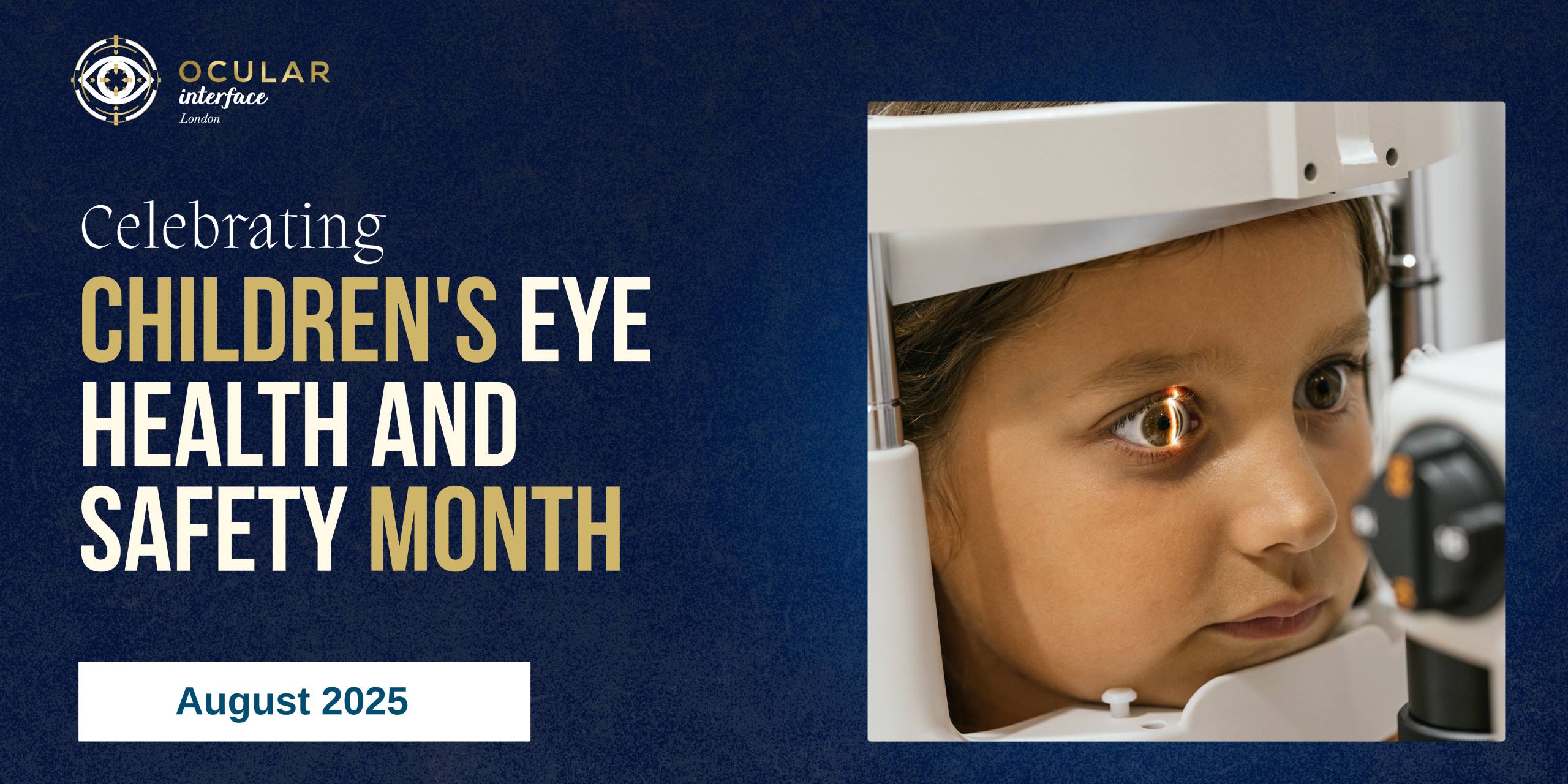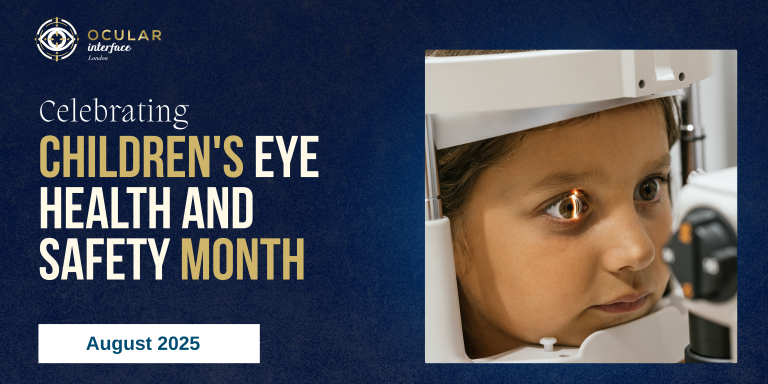August 2025 marked Children’s Eye Health and Safety Month, and OCULAR Interface proudly took part in raising awareness around one of the most crucial aspects of child development—vision. Healthy eyesight is not only essential for academic achievement but also for physical coordination, emotional wellbeing, and overall quality of life. Yet, childhood vision problems often go unnoticed until they begin to interfere with learning or daily activities. Our campaign this year aimed to change that narrative by providing families, educators, and healthcare professionals with vital information, tools, and resources to protect young eyes.
The Importance of Early Eye Care
Children may not always recognise or communicate that they have a vision problem. Many issues, such as myopia (short-sightedness), amblyopia (lazy eye), and strabismus (eye misalignment), can be corrected or significantly improved if detected early. Left untreated, these conditions may lead to long-term visual impairment. Throughout August, OCULAR Interface encouraged parents to prioritise comprehensive eye exams before the start of the school year, ensuring that learning and development aren’t hindered by undiagnosed vision challenges.
Promoting Eye Safety in Everyday Life
Beyond routine care, safety is another cornerstone of healthy vision. Our campaign highlighted the risks of eye injuries in children, particularly during sports and recreational activities. Whether on the football field, in a science classroom, or at home with toys, accidents can happen in an instant. Wearing protective eyewear, using age-appropriate toys, and practicing safe habits can make a significant difference in preventing avoidable injuries.
We also addressed digital eye strain, which has become increasingly relevant in the modern era. Children are spending more time than ever on digital devices—whether for learning or leisure—and this can lead to symptoms such as headaches, blurred vision, and dry eyes. Simple strategies like the 20-20-20 rule (looking away every 20 minutes at something 20 feet away for 20 seconds) were promoted as easy, practical steps for parents and children alike.
The Role of AI in Paediatric Eye Care
In line with our mission of integrating technology into eye care, OCULAR Interface explored how Artificial Intelligence (AI) can enhance the early detection and management of childhood eye conditions. AI-powered screening tools are being developed to identify refractive errors, detect early signs of amblyopia, and even recognise symptoms of eye disease in children—sometimes before they are visible to the human eye.
Such innovations are especially impactful in communities where access to eye specialists is limited. By supporting timely intervention, AI ensures that more children receive the treatment they need, when they need it. Our content during August showcased examples of these tools, sparking conversations about how technology can complement—not replace—eye care professionals in protecting children’s vision.
Looking Ahead
Children’s Eye Health and Safety Month serves as a timely reminder that vision care is an investment in the future. At OCULAR Interface, we remain committed to bridging the gap between traditional care and technological innovation. By continuing to spotlight awareness campaigns and supporting families with the right knowledge, we strive to ensure that every child has the opportunity to see the world with clarity, safety, and confidence.










